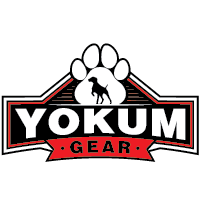What is Leash Aggression?
Leash aggression, also known as reactivity, is a common behavioral issue where dogs exhibit aggressive behaviors such as barking, lunging, or growling while on a leash. This type of aggression is often situational, occurring primarily during walks or when the dog is restrained by a leash. Understanding the underlying causes is crucial for effective management and modification of this behavior.
Causes of Leash Aggression
There are several reasons why dogs may develop leash aggression:
- Fear or Anxiety: A dog may feel trapped and unable to escape a perceived threat while on a leash, leading to defensive behaviors.
- Frustration: Dogs that are highly social or energetic may become frustrated when they cannot reach other dogs, people, or interesting stimuli, leading to aggressive outbursts.
- Lack of Socialization: Inadequate exposure to different environments, people, and dogs during critical development periods can result in overreactions to stimuli when on a leash.
- Previous Negative Experiences: Negative encounters with other dogs or people while on a leash can lead to anticipatory aggression.
Identifying Leash Aggression
Recognizing the signs of leash aggression is the first step towards management. Common indicators include:
- Barking or growling at other dogs, people, or moving objects.
- Lunging or pulling towards the trigger.
- Stiff body posture or raised hackles.
- Snarling or showing teeth.
- Excessive panting or drooling in stressful situations.
Management Strategies
Successfully managing leash aggression involves a combination of training, behavioral modification, and sometimes, professional intervention. Here are some effective strategies:
1. Positive Reinforcement Training
Focus on rewarding calm behavior and obedience. Use treats, praise, or a favorite toy to reinforce positive behavior when your dog remains calm around potential triggers.
2. Desensitization and Counter-Conditioning
Gradually expose your dog to what triggers their aggression at a distance where they remain calm. Pair the presence of the trigger with high-value rewards to create a positive association. Slowly decrease the distance over time as your dog becomes more comfortable.
3. Use of Equipment
Consider using a front-clip harness or head halter to give you better control over your dog. These tools can help manage pulling and lunging without causing harm or pain to your dog.
4. Professional Help
If your dog's aggression is severe, consult a professional dog trainer or a veterinary behaviorist. They can provide a tailored behavior modification plan and may suggest additional tools or techniques.
5. Keep Calm and Stay Consistent
Your dog can sense your emotions, so it's vital to remain calm and composed during walks. Consistency in your approach and reactions is crucial for your dog to learn and adapt to new behaviors.
Conclusion
Leash aggression in dogs can be challenging but is manageable with the right strategies and consistent effort. By understanding the causes and employing positive reinforcement, desensitization, and professional advice when needed, you can help your dog become more relaxed and enjoyable on walks. Remember, patience and persistence are key, and every small step towards improvement is progress.

